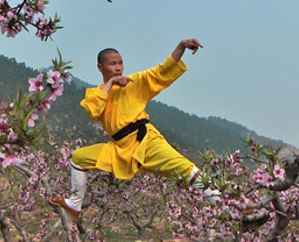

Few creatures behold the elegant mystique status in the world as the legendary Praying Mantis. This segment is all about the amazing world of this insect and its impact on culture spanning centuries. Their stoic beauty stirs our curiosity and seeds our imagination with fantastic stories and personified fables. Powerful yet graceful, they are masters of the insect kingdom. We will be exploring the praying mantis life cycle, eggs, natural enemies, and some fascinating facts about this amazing species. We hope you enjoy this piece and are inspired by a newfound appreciation of these curious entities.
A praying mantis, or praying mantid, is the common name for an insect of the order Mantodea. Often misspelled as “preying” mantis, being a natural predator, they are in fact named for their “prayer-like” posture. The name mantis is actually derived from the Greek word mantis, which means fortune teller or oracle seer. It is also important to recognize that across the world’s cultures, to be in the presence or emergence of these insects was to have a connection to the divinatory aspects of mysticism. Perhaps the reincarnated essence of a monk, a grandmaster of this form, the world’s largest praying mantis was recorded at about 18 centimeters long, in Southern China, in 1929. Most mantids live in the tropics, with approximately 2,000 species described to date, only 18 native species are known from the entire North American continent.
The life of the mantid starts in a pod of eggs called an ootheca. A tough outer casing forms when the eggs laid by the female are exposed to air. These are often placed on small branches or twigs. The egg mass will then hatch in the spring or early summer as the temperature rises and environmental conditions are favorable for hatching.
The praying mantis has a three segmented body, with a head, thorax and abdomen. The abdomen is elongated on which some will grow wings as adults. Females have strong and large cerci. The first thoracic segment, the pro thorax is elongated and from it extends a modified spiked forearm. Their famous forearms are extraordinarily powerful for their size with the ability to crush their prey in half. Their mouth parts consist of strong cutting teeth to tear through tough insect exoskeletons.
Mantids have huge compound eyes mounted on a triangular shaped head, the placement and size of which give a wide field of vision. Their profound sight for detecting movement of prey and the fluid movement of the head to bring their prey into their binocular field of view are some of the strengths to their hunting style. Almost owl like and the only known insect with this ability, they are able to turn their head 180 degrees affording them excellent vision and hearing. Their antennae are most likely used for smell and visual communication. Oddly, the praying mantis has just a single ear, located on the underside of its belly, just forward of its hind legs. Unlike grasshoppers and locusts, the mantid cannot discriminate the direction of sound, nor its frequency. It’s listening mechanism works by detecting ultrasound, or the sound produced by echo locating bats. Studies have shown that praying mantids are quite good at evading bats. A flying mantis will perform fancy acrobatic maneuvers, able to stop, drop, and roll in midair, dive bombing away from the hungry predator.
As an apex carnivorous insect, the praying mantis feeds mainly on other insects. It is, however, documented that larger praying mantises are able to consume small reptiles and even small mammals or birds. As often recounted in countless tales, the praying mantis will also prey on each other, usually during the nymph stage and often after mating the female will rip the head off the male and consume him. This provides sufficient protein for the female for the egg producing process. A study by J. P. Lelito and W. D. Brown indicated that the male mantis seemed to approach hungry females with more caution, and were purposely mounted on hungry females for a longer time, and thus actively avoiding being devoured by the female.
Often they can be the prey of large frogs, monkeys, larger birds, bats and snakes. Similar sized spiders and giant hornets are also natural enemies from which their fighting style inspired the Shaolin Monks of China. As part of the final praying mantis life cycle stage, they often do not develop wings until the final molt. Some praying mantis does not develop wings at all, or may have small wings that cannot function for full flights, just short and jumping bursts. It will often fly when the adult female begins to emit pheromones which attract males for mating.
The northern style of Seven Star Praying Mantis kung fu was created in the 16th century by a Shaolin Monk, Wang Lang. This kung fu form is based in long range kicking, middle range hand techniques, trapping skills, pressure point/pressure strikes, iron palm training, joint locks, throws, and skills capable of neutralizing ground grappling attacks. As legend has it, after losing a match at the Shaolin temple, Wang felt inspired to look for way to improve his fighting skills. A chance observation of a Praying Mantis defeating a cicada led him to discover that he was witnessing unique fighting skills in nature different from the present forms and styles.
After intense observation and study of what made the mantis a formidable predator, he began to create a new style of kung fu, based on the body structure and grouping of motions witnessed. This new kung fu system would be an improvement over the larger hard style motions of the Shaolin style he had previously studied. He used the newfound skills of Praying Mantis kung fu to defeat his elder classmate in practice. Together with the other monks of the Shaolin temple Wang continued to develop the style.
